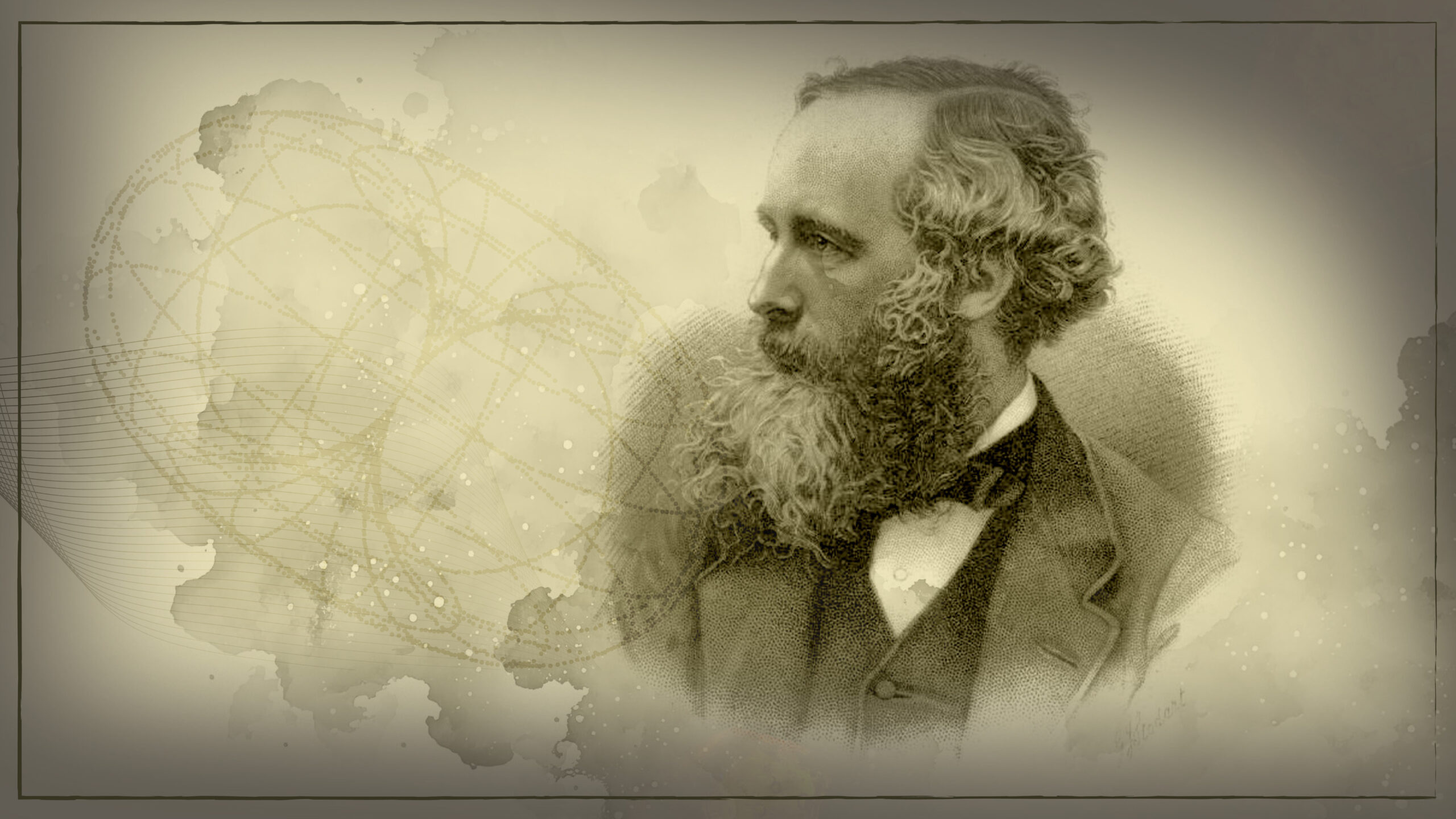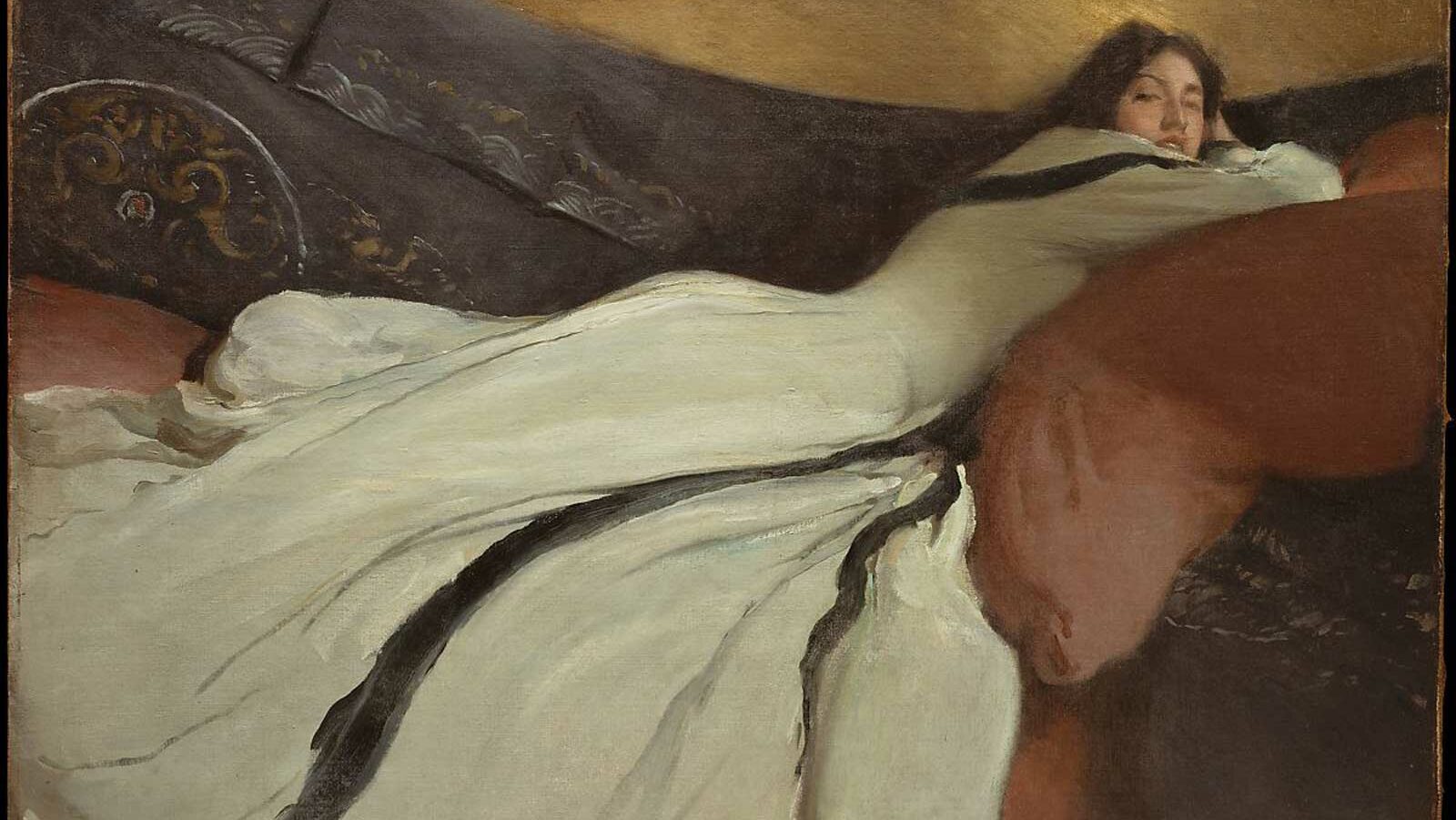Reading Time – 7 Minutes, Difficulty Level 1/5
James Clerk Maxwell, born in Edinburgh, in 1831, was a Scottish physicist whose contributions to the field of physics had a profound and lasting impact. Maxwell’s most significant achievement was the formulation of a set of equations that laid the foundation for the theory of electromagnetism, demonstrating that electric and magnetic fields are interconnected and can propagate through space as electromagnetic waves. This ground-breaking insight not only unified the theories of electricity and magnetism but also paved the way for the understanding of light as an electromagnetic wave.
Early Life and Education
Maxwell’s early life was spent in Glenlair, Kirkcudbrightshire, where his innate inquisitiveness became evident from a young age. He attended the prestigious Edinburgh Academy, and whilst facing social challenges, such as the nickname ‘Dafty’ due to his appearance, Maxwell’s academic prowess shone through. At the age of 13, he won the school’s maths medal, and excelled in English and poetry. He authored his first scientific paper at 14: ‘On the description of oval curves and those having a plurality of foci’, which was read to the Royal Society of Edinburgh in 1946 (O’Connor and Robertson, 1997). His education continued at the University of Edinburgh, where a building has since been named in his honour (James Clerk Maxwell Building) housing the Institute for Astronomy, the Institute for Particle and Nuclear Physics, and the Institute for Condensed Matter and Complex Systems.
Maxwell’s postgraduate education was furthered at the University of Cambridge in 1850, where he joined the Cambridge Apostles, a prestigious secret society for the intellectual elite, where the intersection of his Christian faith and scientific understanding was explored through essays. Under William Hopkins, his academic supervisor, he graduated in 1854 with a degree in mathematics. He presented a mathematical paper to the Cambridge Philosophical Society, and applied for a fellowship in order to stay at Cambridge and pursue scientific interests freely (Craik, 2007). His innovative work on the nature and perception of colour was presented in his paper ‘Experiments on Colour’ in 1955, where he then went on to become a fellow of Trinity College in 1855, and prepared lectures on hydrostatics and optics. He left Cambridge in late 1856 (aged 25) to become the Chair of Natural Philosophy at Marischal College in Aberdeen – approximately 15 years younger than other professors at Marischal College at the time. Maxwell became engaged to marry Katherine Mary Dewar, the daughter of the Principal of Marischal College, in 1858 and they married in 1859.
Maxwell’s Scientific Contributions
Maxwell’s Equations and Electromagnetism
Maxwell’s Equations, completed in the mid-19th century, provided the theoretical foundation for understanding electromagnetic waves. He predicted the existence of these waves, which travel at the speed of light and was confirmed experimentally by Heinrich Hertz. This ground-breaking insight paved the way for later advancements in telecommunications and technologies like radio waves.

- First Equation: Gauss’s Law, which states that the electric flux through a closed surface is proportional to the total charge enclosed in that space.
- Second Equation: Another form of Gauss’s Law, with ‘magnetic flux’ replacing ‘electric flux’ in the First Equation, and is equal to zero. The crucial implication is that the magnetic field has no divergence, meaning that there can be no magnetic monopoles, and that magnetic field lines always form closed loops.
The first two Maxwell’s equations are for integrals of the electric and magnetic fields over closed surfaces.
- Third Equation: Derived from Faraday’s Laws of Electromagnetic Induction, stating that a time-varying magnetic field always produces an electric field. Contrary to the initial description, it is not restricted to coils; instead, it asserts that any time-varying magnetic field induces an alternating electromotive force.
- Fourth Equation: An integral form derived from his extension of Ampere’s Law, the equation introduces the concept of displacement current to account for changing electrical fields. Contrary to the original description, it relates the curl of a magnetic field around an axis to the component of the current density along that axis; the displacement current is represented by ‘+J’ at the end of the equation.
Maxwell recognised the need to include the effect of changing electric fields in the relationship, with the integral form stating both electric currents and changing electric fields contribute to the creation of a proportional magnetic field along any enclosed curve. These four macroscopic equations mathematically united the phenomena of electricity and magnetism, demonstrating that changing electric fields produce magnetic fields and vice versa.
Statistical Mechanics and Kinetic Theory of Gases
Maxwell also made significant contributions to the field of statistical mechanics and the kinetic theory of gases. His formulation of Maxwell–Boltzmann distribution, which describes the statistical distribution of speeds of gas molecules at a given temperature, played a crucial role in understanding the behaviour of gases on a molecular level.
Colour Theory and Perception
Maxwell’s interest in colour theory led him to conduct experiments demonstrating that colours could be created by combining different intensities of three primary colours: red, green, and blue. This laid the foundation for the later development of colour photography and television.

(Tauno Erik, 2020)
Maxwell’s Demon and Thermodynamics
Maxwell also delved into thermodynamics, proposing the concept of “Maxwell’s Demon” as a thought experiment challenging the second law of thermodynamics. Maxwell’s Demon is a hypothetical creature conceived by James Clerk Maxwell to challenge the second law of thermodynamics. In this imaginative scenario, the Demon selectively allows faster and slower-than-average gas molecules to segregate, creating temperature differences that could be harnessed to run heat or mechanical engines. While Maxwell’s Demon explores the concept of seemingly violating thermodynamic principles, no actual violation has been observed, sparking further discussions on the foundations of thermodynamics and information theory.
Maxwell’s Legacy
Maxwell’s legacy extends beyond his contributions to the foundations of modern physics. Further to his designing of the Cavendish Laboratory in Cambridge, and as its first professor, the Cavendish now stands as one of the world’s most successful and influential physics laboratory. Maxwell died in 1897 at the age of 48 from stomach cancer, and is now buried in Parton, Scotland. The James Clerk Maxwell Foundation is based in Edinburgh, with a small museum at his birthplace promoting his considerable legacy in STEM through his contributions to electromagnetics spawning innovations such as the radio, Radar, GPS and mobile phones.
James Clerk Maxwell’s profound impact on the field of physics is aptly captured in Albert Einstein’s declaration that “One scientific epoch ended and another began with James Clerk Maxwell.” This acknowledgement underscores the transformative nature of Maxwell’s contributions, as he not only unified the realms of electricity and magnetism with his equations but also laid the foundation for our understanding of electromagnetic waves, including the revolutionary concept of light as such a wave. Einstein’s admiration for Maxwell goes beyond mere praise, as he expressed, “The work of James Clerk Maxwell changed the world forever.” Indeed, Maxwell’s ground-breaking theories and equations not only shaped the course of physics but also paved the way for countless technological innovations. Maxwell’s enduring influence remains a testament to his status as one of the most profound and fruitful individuals in the history of physics since the time of Newton.

(JCMF 2023)
References and Links
Bar-Orian, N. (2019, May 28). Redesign. Designblog – Gerrit Rietveld Academie. Maxwells Colour System | Designblog (rietveldacademie.nl)
Craik, D. (2007). Mr Hopkins’ men. Cambridge reform and British mathematics in the 19th century. Mr Hopkins’ men. Cambridge reform and British mathematics in the 19th century (researchgate.net)
Erik, T. (2020, April 19). Mechanical RGB colour mixing. Mechanical RGB colour mixing – Tauno Erik
Evans, R.H. (2012). James Clerk Maxwell’s statue. https://thecuriousastronomer.wordpress.com/2012/07/16/james-clerk-maxwells-statue/
Isaac Physics. (2023). The University of Cambridge. https://isaacphysics.org/concepts/cc_maxwell_boltzmann_distribution?stage=all
James Clerk Maxwell Foundation. (2023). Who was James Clerk Maxwell? (clerkmaxwellfoundation.org)
James Clerk Maxwell. (2023). James Clerk Maxwell – Wikipedia
King’s College London. (2017). The man who ‘changed the world forever’. The man who ‘changed the world forever’ | Feature from King’s College London (kcl.ac.uk)
Maxwell’s Equations. (2023). Maxwell’s Equations: Maxwell’s 4 Equations And Their Derivations (byjus.com)
Maxwell’s Demon. Maxwell’s Demon (auburn.edu)
Molecular Expressions, Pioneers in Optics. (2015). Molecular Expressions: Science, Optics and You – Timeline – James Clerk Maxwell (fsu.edu)
Scottish Science Hall of Fame. (2009). James Clerk Maxwell biography – Science Hall of Fame – National Library of Scotland (nls.uk)

A former professional badminton player turned STEM enthusiast, Basia holds an MSc in Evolutionary Genetics from the University of Edinburgh.
She’s passionate about all things small, from genes to viruses and other microorganisms, and has a particular interest in viral recombination from a phylogenetic and phylodynamic perspective.








